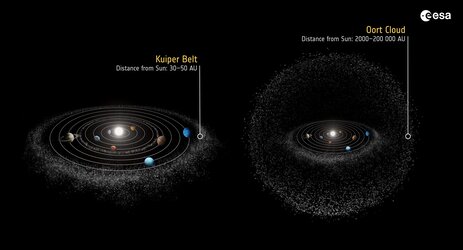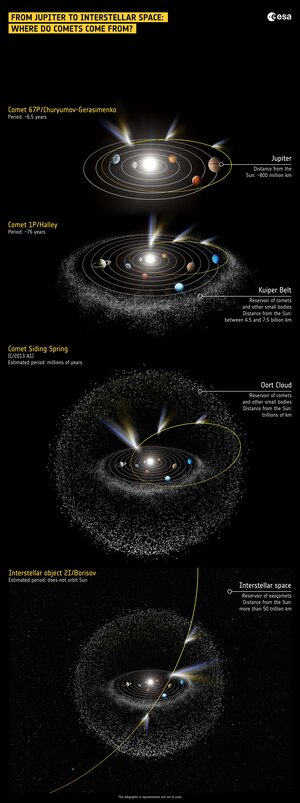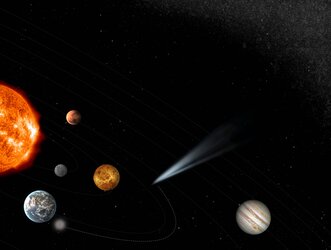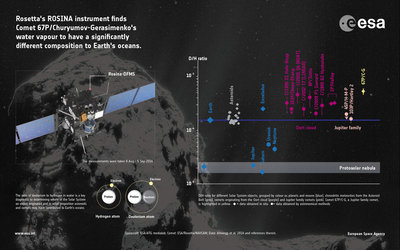
Small objects in the Solar System
The Solar System consists of more than just the Sun and the planets. Dwarf planets and so-called ‘small Solar System bodies’ — a term that includes comets and asteroids — also orbit the Sun. This illustration shows three of the best places to go looking for them.
Closest to home, between the orbits of Mars and Jupiter, lies the asteroid belt. As the name implies, the main asteroid belt is a doughnut-shaped ring consisting mostly of asteroids. These orbit the Sun at a distance of 2.1–3.3 AU, where 1 AU is the Earth-Sun distance of around 150 million km. The total mass of objects in the asteroid belt is estimated to be around 3% of the mass of the Moon.
30–50 AU from the Sun, beyond the orbit of Neptune, lies the Kuiper Belt. The Kuiper Belt is home to dwarf planet Pluto and thought to be an important refuge of comets. It is similar in shape to the asteroid belt, but 20 times as wide and 20–200 times as massive.
So distant that it’s never been seen directly, the Oort Cloud is a shell of icy objects thought to surround the entire Solar System. The region can be subdivided into a spherical outer Oort Cloud with a radius of some 20 000–200 000 AU and a doughnut-shaped inner Oort Cloud with a radius of 2000–20 000 AU. The Oort Cloud is home to billions of comets, some of which we have seen passing through the inner Solar System on orbits that take thousands or even millions of years to complete.





